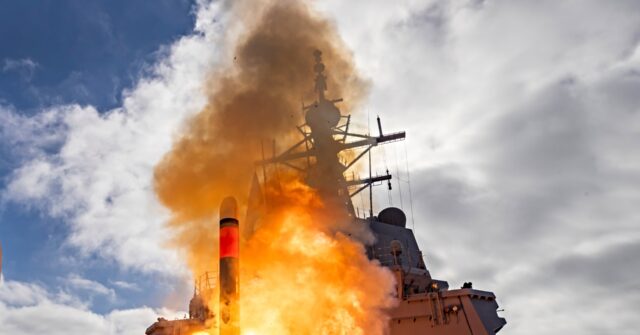On a significant day for the Royal Australian Navy (RAN), the naval force executed a successful test firing of the Tomahawk Land Attack Cruise Missile from HMAS Brisbane (DDG-41), marking Australia’s entry into an elite group of nations with this capability. This accomplishment places Australia alongside the United States and the United Kingdom as only the third nation to service the Tomahawk missile system. The test occurred off the U.S. West Coast during the Brisbane’s ongoing ‘interchangeability deployment,’ a mission that has seen the destroyer based at Naval Base San Diego, where it also underwent a maintenance period with the assistance of the U.S. Navy.
The Australian government hailed the missile test as a resounding success, highlighting its critical role in the enhancement of Australia’s surface combatant fleet capabilities. This live firing represents a pivotal milestone in the military’s broader efforts to increase lethality and operational effectiveness, especially in the context of a changing security environment in the Asia-Pacific region. The Tomahawk missile is designed for long-range precision strikes and boasts an impressive operational range of up to 1,550 miles, which significantly improves Australia’s deterrence capabilities against potential threats.
Defense Minister Richard Marles articulated the importance of this advancement, emphasizing Australia’s commitment to bolstering its defense capabilities and collaborating closely with allied partners. He noted that these enhancements could fundamentally alter the strategic assessment for any potential aggressor in the region. The sentiment reflects a growing acknowledgment of the evolving geopolitical landscape and the necessity for Australia to enhance its defense posture in response to increasing military capabilities from neighboring powers, particularly China.
This missile test aligns with Australia’s recent announcement of an ambitious naval expansion plan involving a budget of $7 billion aimed at increasing the number of major surface combatant vessels from 11 to 26. This initiative underscores the Australian government’s commitment to modernize and expand its naval forces, ensuring they are equipped to address contemporary security challenges while bolstering allied defense relationships. The plan will likely include the acquisition of over 200 Tomahawk missiles to arm the enhanced fleet, further advancing operational readiness and capability.
As tensions continue to rise in the Asia-Pacific region, this development is critically timely. The missile test serves not just as a confirmation of technological capability, but also as a clear signal of intent to prospective adversaries about Australia’s resolve to defend its interests and engage in cooperative security efforts with allies. The ability to conduct long-range precision strikes places Australia in a stronger position both defensively and offensively, allowing for a more integrated network of allied military operations.
In conclusion, the successful test firing of the Tomahawk missile by the RAN represents a significant leap forward for Australia’s defense capabilities, aligning with strategic priorities to enhance naval operations and regional security. This historic achievement reflects the commitment of the Australian government to strengthen its military in the face of emerging threats while fostering robust defense partnerships. As Australia forges ahead with its naval expansion and modernization plans, the integration of advanced weaponry like the Tomahawk missile is set to play a crucial role in shaping the future of Australian defense strategy in a contested region.

